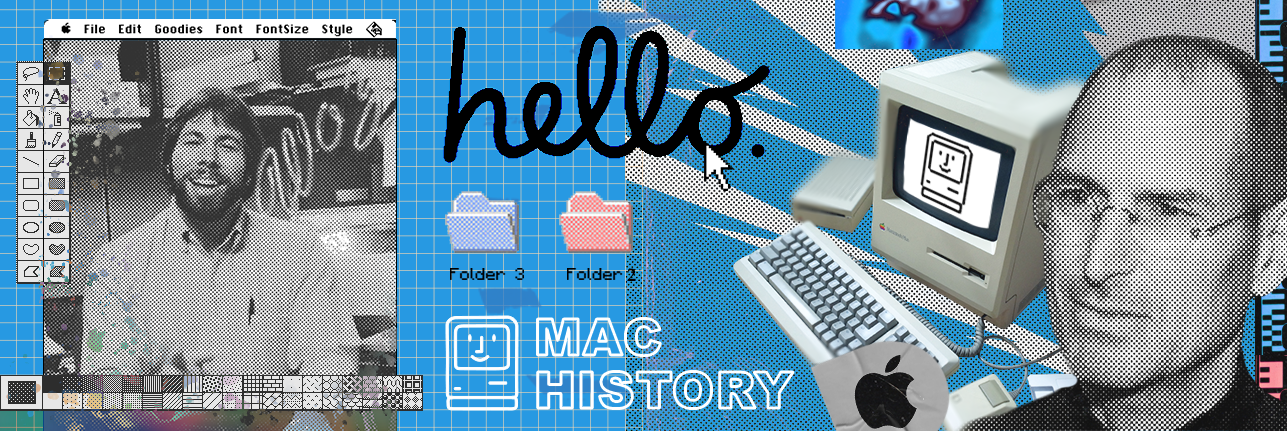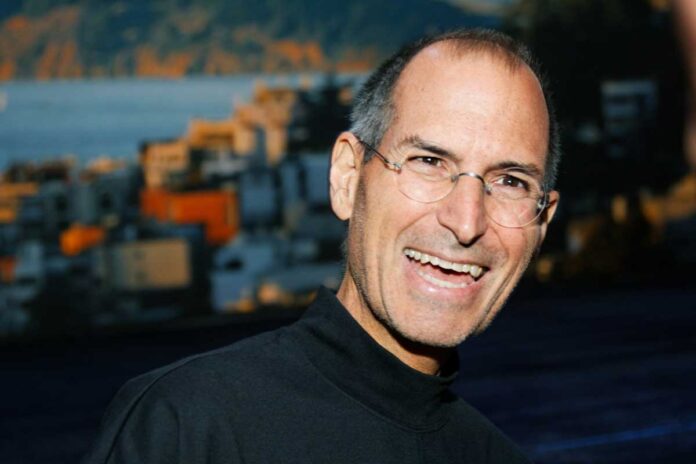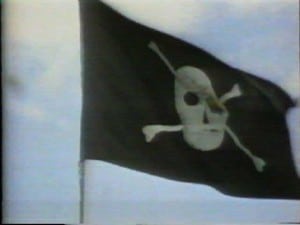Steve Jobs was quick to distance himself from the failure of the Apple Lisa, since in 1980 the then managing director Mike Scott denied him the management of the Lisa team. In an internal competition with the Lisa team, Jobs subsequently acquired the fledgling Macintosh project from Jef Raskin and bet $5,000 that he would bring the Mac to the market before Lisa. Initially, Jobs hounded Raskin out of the group. Then he positioned his team within Apple as a rebel troop. They wanted to prove the Lisa team, which enjoyed the confidence of the management, that they could do it.
Above the building of the Mac developers “Bandley III”, a skull and crossbones flag fluttered. “It is better to be a pirate than to go to the Navy,” Jobs said to his developers. Apple investor Arthur Rock became really agitated by this action, “Flying that flag was really stupid. It was telling the rest of the company they were no good.” But Jobs loved it, and he made sure it waved proudly all the way through to the completion of the Mac project. “We were the renegades, and we wanted people to know it,” he recalled. (Isaacson, page 186)
Jobs had assembled a dream team of genius programmers and engineers, whom he urged like a cult leader with flattery and verbal attacks to continually new heights. But the ever-changing demands of Jobs delayed the Mac project so that the Apple co-founder finally lost his bet against the Lisa team. It was not until the 24th of January 1984, that the Mac was finally ready.
At the public presentation of the new computer model, Jobs recited the song “The Times They Are A-Changin” by Bob Dylan:
Come writers and critics
Who prophesize with your pen
And keep your eyes wide
The chance won’t come again
And don’t speak too soon
For the wheel’s still in spin
And there’s no tellin’ who
That it’s namin’
For the loser now
Will be later to win
For the times they are a-changin’
In their most famous television commercials of all time, director Ridley Scott evoked this vision of enslaved IBM users who would be released through the Mac. The Mac would make clear in the clip, why Big Brother IBM would not dominate the world; why “1984 would not be 1984”. Jobs was visibly proud of the achievements they made, and attributes this to his broadly talented employees. “I think part of what made the Macintosh great was that the people working on it were musicians and poets and artists and zoologists and historians who also happened to be the best computer scientists in the world,” Jobs said in a 1995 documentary on the U.S. television network PBS.Difficult start for the Mac
With the Macintosh, Steve Jobs had set a new milestone in computer development. But Apple had to first overcome a long dry spell in order to make a commercial breakthrough. This was also due to the fact that the first Mac model was only equipped with 128 kilobytes of main memory which was far too little. At that time, Apple Fellow Alan Kay described the Mac as a “Honda with a one-gallon gas tank.”
Furthermore, applications such as Aldus Pagemaker or peripheral devices such as laser printers, which could use the advantages of Mac GUI in desktop publishing, did not exist yet.
“The original 128K Mac had too many problems to list,” wrote Jack Schofield from the Guardian 20 years later in an article about the 20th anniversary of the apple Macintosh. “It had too little software, you couldn’t expand it (no hard drive, no SCSI port, no ADB port, no expansion slots), it was horribly underpowered and absurdly overpriced. The way MacWrite and MacPaint worked together was brilliant, but producing anything more than a short essay was a huge struggle. Just copying a floppy was a nightmare.”
In a two-day marathon meeting, Sculley demanded that Jobs should give up his position as Apple vice president and general manager of the Macintosh team. Sculley wanted Steve Jobs to become Apple’s new chairman and represent the company on the outside, without having influence on the core business. When Jobs got wind of Sculley’s plan to disempower him, he attempted to organize a coup in the Apple board. Sculley defended himself and told the board: “I said look, it’s Steve’s company, I was brought in here to help you know, if you want him to run it that’s fine with me but you know we’ve at least got to decide what we’re going to do and everyone has got to get behind it.” The majority of the board stood behind the former Pepsi manager and turned away from Steve Jobs.
Read next page: Steve Jobs loses the showdown




[…] The Legend of Steve Jobs – His Life and Career » Mac History. Steve Wozniak and Steve Jobs […]
[…] time Apple has used an iconic design for an iOS app. The original iOS calculator used a design that paid homage to the classic Braun ET44 calculator. Apple SVP of Industrial Design Jonathan Ive is well-known as […]
[…] time Apple has used an iconic design for an iOS app. The original iOS calculator used a design that paid homage to the classic Braun ET44 calculator. Apple SVP of Industrial Design Jonathan Ive is well-known as […]
[…] time Apple has used an iconic design for an iOS app. The original iOS calculator used a design that paid homage to the classic Braun ET44 calculator. Apple SVP of Industrial Design Jonathan Ive is well-known as […]
[…] of German designer Dieter Rams defender simplicity and functionalism to inspire Steve Jobs and his Apple universe, in addition to Banzi, which would connect his brain chips from the first approach to […]
[…] Dieter Rams, defensor p la simplicidad junto con el funcionalismo que inspiraría a Jobs y a su universo Apple, además p a Banzi, que conectaría los chips p su cerebro a partir p ose primer acercamiento a la […]
[…] was the graphical user interface. I thought it was the best thing I’d ever seen in my life” (Steve Jobs 1995) Inspired by this amazing experience in 1983 Steve Jobs brought out “The Apple […]
[…] influenced the designers at Apple. See here and here. I’m not about to have a rant about the brazen similarities, its more to […]
[…] read about Steve Jobs and Dieter Rams. It talks about how Steve Jobs was highly influenced by the many years of work and design success […]
[…] Dernbach, Christoph. “The Legend of Steve Jobs – His Life and Career.” Mac History, Mac History, 1 Feb. 2015, https://www.mac-history.net/steve-jobs/2012-10-30/the-legend-of-steve-jobs-his-life-and-career […]
[…] Dieter Rams, defensor de la simplicidad y el funcionalismo que inspiraría a Steve Jobs y a su universo Apple, además de a Banzi, que conectaría los chips de su cerebro a partir de ese primer acercamiento a […]
[…] should regard Steve Jobs as a true legend who always led by example. He has an amazing and inspiring story that should instill a sense of […]